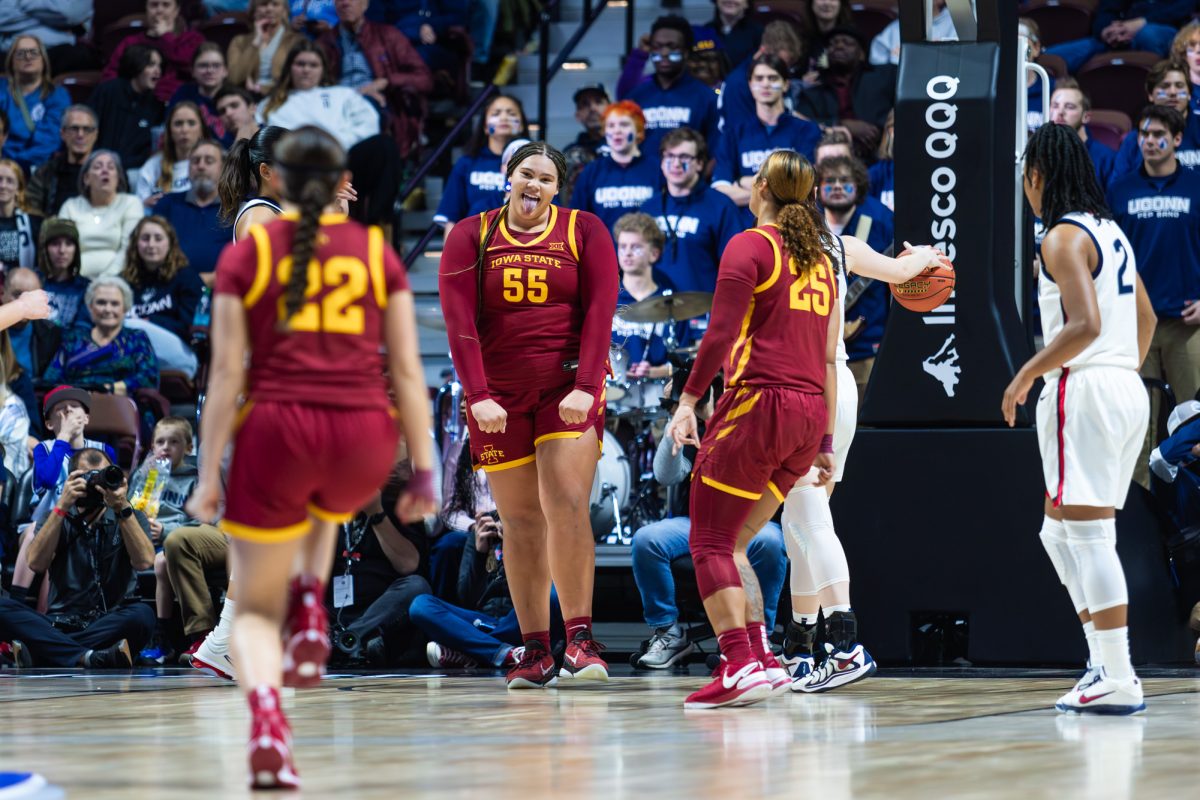College admissions processes to change, giving students different path to success
Matthew Rezab/Iowa State Daily
A group of incoming freshmen discussed what to expect when college life starts in the fall during their “How to Survive Being New at ISU” orientation session on June 23, 2015.
August 8, 2019
Some people believe students from larger high schools are more prepared for college than those who attended smaller high schools because they might have had access to AP classes, dual credit courses or better instruction. However, this is not the case.
In the 1990s, a study at Iowa State University sought to answer this question. The results provided evidence the misconception is false, demonstrating that students who attended smaller schools weren’t any less prepared for college than larger school’s students.
“[Students from small high schools] aren’t at any disadvantage whatsoever,” said Phil Caffrey, director of Admissions Operations and Policy at Iowa State. “One would say incoming students are just better prepared nowadays.”
Jonathan Compton, senior research analyst at Iowa State Office of the Registrar, agreed with Caffrey. Compton provided a regression model of 2018 first semester GPA in correlation to four things: high school rank, class size, courses taken and GPA. According to this regression model, high school class size has a 0.00 impact on first semester GPA at Iowa State.
Caffrey added 70% of students enter their freshman year with college credits, which is more than ever before. Many students enter Iowa State with the majority of their general education courses already finished through free, dual credit classes at their local community colleges.
“My high school had many dual credit classes with Kirkwood Community College, which allowed me to come into college with 24 credits,” said Isabel Schminke a sophomore in elementary education at Iowa State.
This accumulation of credits — along with AP classes and other extra credit courses — is changing the way GPAs are measured. Some high schools have weighted GPAs, while others do not weight GPAs, making the conversion processes for admissions offices more difficult each year.
This new ‘normal’ has college admissions offices in Iowa scrambling to create a new, comparable, statewide transcript for high school graduates.
While it’s still a few years from making its debut, this transcript would more fairly compare students’ GPA, test scores and college credits completed while in high school. This would make the admission process as impartial as possible across the state of Iowa.
At Iowa State, test scores and transcripts aren’t the only thing used to admit students currently.
The Regent Admission Index (RAI) score, which was introduced to campus Fall 2009, combines a student’s cumulative GPA, ACT or SAT score and completed core courses into a formula, giving them an overall score. A student will be automatically admitted with an RAI score of 245 or above.
“A student’s RAI score is a pretty good indicator of how prepared they are and how well they’ll do in college,” Caffrey said. “It’s also a pretty good indicator of how high their [Iowa State] GPA will be their first semester.”
Many students said they believed their RAI scores reflected what they understood when coming into college.
“I felt like my RAI score reflected how much I knew because most of my RAI score relied on the abundance of core classes I took throughout high school,” Alex Moore, sophomore in supply chain management, said. “By taking so many core classes, I had a broader knowledge.”
If a student gets below a 245 RAI score, the Office of Admissions individually reviews their application. 6% of incoming freshmen have a RAI score below 245. In the past, Iowa State did not have a system in place to check up on these students to see if they were struggling, but soon, they will.
Beginning in the Fall 2020 semester, the Office of Admissions will implement the Smart Start Program, providing a network of support and resources to promote students’ academic success.
The 6% of incoming freshmen with an RAI score below 245 will participate in workshops, group and individual meetings and tutoring to aid them in their first semester. If students achieve a 2.33 GPA or higher, they will complete their Smart Start participation.
“[Smart Start] makes us hopeful that students who are able to succeed, but just need a little extra push, are able to succeed,” Compton said.
If Smart Start is successful and funding remains available, Iowa State could open up the program to other students who might need academic support as well.
“Smart Start sounds like a great idea,” said Drew Simon, a sophomore in advertising at Iowa State. “I know a lot of people who had trouble adjusting academically to college, and honestly, the more resources available the better.”
While college can be an intimidating transition for many students, the Office of Admissions and the Office of the Registrar hope that the combination of more prepared incoming students and programs like Smart Start will make each student’s transition smooth and successful.
“Iowa State really prides itself in providing opportunities like this for their students to better themselves,” Compton said.







